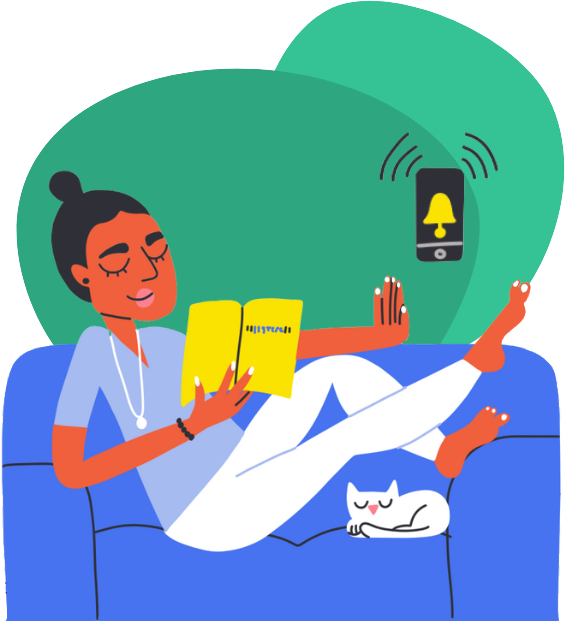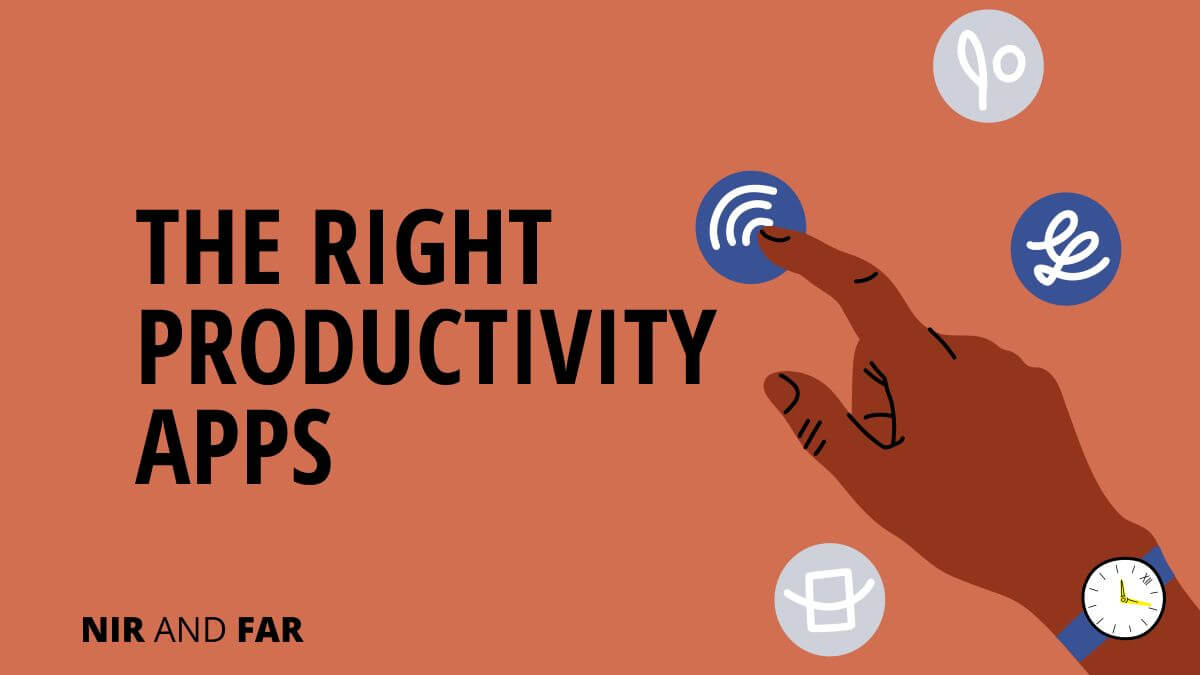Since writing Indistractable, I’m often asked what tools and apps I personally use to get the most out of my day.
But after years of research into the psychology of productivity, focus, and the causes of distraction, I’ve learned that there is no one magic, best productivity tool.
Rather, the best tool is the one you’ll actually use,which is why I only rely on a few to be at my best.
Find the handful of tools that serve you well-enough and tailor them to suit your needs instead of wasting time searching for the perfect solution.
Below are my most frequently used productivity tools. They work for me—and hopefully will work for you as well.
Google Calendar for Scheduling
As anyone who has read Indistractable knows, timeboxing is the best productivity hack out there. It’s a time management technique that’s far more effective than a to-do list, and it’s a critical component of becoming indistractable.
Google Calendar is where my timeboxed calendar lives. Every Sunday, I set aside 15 minutes to review my schedule for the following week and make any necessary adjustments.
But for those of you who don’t like digital calendars, I also created a free schedule maker template that you can use to timeblock your agenda in 15-minute increments.
You can also check out these other timeboxing apps.
Free Distraction Tracker
Reclaim control of your attention today.
Your email address is safe. I don't do the spam thing. Unsubscribe anytime. Privacy Policy.

Pocket for Information Overload
Once upon a time, I would often fall into hours-long black holes because the internet tempted me to read an online news article, then another, and yet another. The situation became so dire that I had to set a hard boundary for myself: I will never read another article again—not in a web browser, anyway.
Instead, I have them read to me by two apps: Pocket and Voice Dream.
When I see an article I want to read, I use Pocket to flag it in my browser, and the app pulls the text from the web page and saves it to the app on my phone. I only allow myself to listen to those articles, using Voice Dream, when I exercise.
Katherine Milkman at the University of Pennsylvania’s Wharton School calls this technique “temptation bundling,” or leveraging a behavior we want to do can help us do things we know we should do.
Studies show it’s an incredibly effective form of multichannel multitasking, and it’s worked for me for years.
Fitbod for Exercise
Fitbod is the one fitness app that hooked me for good. The creators relied on my Hooked Model to build the app.
As someone who was once clinically obese, fitness is one of my top values. Since I was a kid, I tried and failed to develop an exercise habit. Despite the best intentions, I could never stick to a commitment to regularly go to the gym.
But Fitbod has helped me consistently exercise for more than two years, partly because it generates a customized workout for me every time I use it, removing the discomfort of not knowing what to do.
Others seem to feel just as strongly as I do about Fitbod, because it’s been downloaded by more than 5 million people and is consistently ranked among the top-grossing and top-rated apps in its Apple App Store category.
Kindle for Sleep
The question of what productivity tools to use is also a question of what tools to stop using. You have to ditch the ones that aren’t working for you.
That’s why the Kindle is the only digital device I allow in the bedroom.
My wife and I decided to ban the TV and our smartphones from the bedroom a long time ago.
In the past when I had trouble sleeping, I would pick up my smartphone. Big mistake. Inevitably, I would find myself working or scrolling through Twitter.
The Kindle has become my sleeping aid. Now when I wake up because my mind is racing, I pick up my Kindle to read.
Hot tip: Get a book that you find interesting but slightly boring, and it will put you right to sleep. Reading is the best sleeping aid I’ve ever tried.
Forest for Focus
Forest is perhaps my favorite distraction-proofing app. It helps people complete Step 4 of my Indistractable Model, which is to prevent distraction with pacts.
Every time I want to make an effort pact with myself to avoid getting distracted on my phone, I open the Forest app and set my desired length of phone-free time. As soon as I hit a button marked Plant, a tiny seedling appears on the screen and a timer starts counting down.
If I attempt to switch tasks on my phone before the timer runs out, my virtual tree dies, which discourages me from tapping out of the app.
Sometimes I’ll take it a step further and use Forest when someone else is in the room, reinforcing the pact. For example, if my daughter has homework, we’ll do it at the same time and earn trees together.
Focusmate to Fight Distraction
Speaking of effort pacts… Focusmate, of which I’m an investor because I found it to be so effective, facilitates efforts pacts via a one-to-one video conferencing system.
The first time I used it, I was paired with a Czech medical student named Martin. I knew he would be waiting for me to co-work at our scheduled time and didn’t want to let him down. While Martin was memorizing human anatomy, I stayed focused on my writing. Focus mates are discouraged from skipping meeting times because they leave reviews for each other.
It continues to be my go-to when I need someone to hold me accountable but a friend is unavailable.
So, there you have it. Those are my best productivity tools—ones I use in my day to day to be indistractable.
Remember, this roundup is just a sample of the apps I’ve tried. Here’s an exhaustive list of all the tools I know and recommend. Go forth and find what works for you!
Related Articles
- Schedule Maker: a Google Sheet to Plan Your Week
- Habit Tracker Template in Google Sheets
- The Ultimate Core Values List: Your Guide to Personal Growth
- Timeboxing: Why It Works and How to Get Started in 2024
- An Illustrated Guide to the 4 Types of Liars
- Hyperbolic Discounting: Why You Make Terrible Life Choices
- Happiness Hack: This One Ritual Made Me Much Happier

